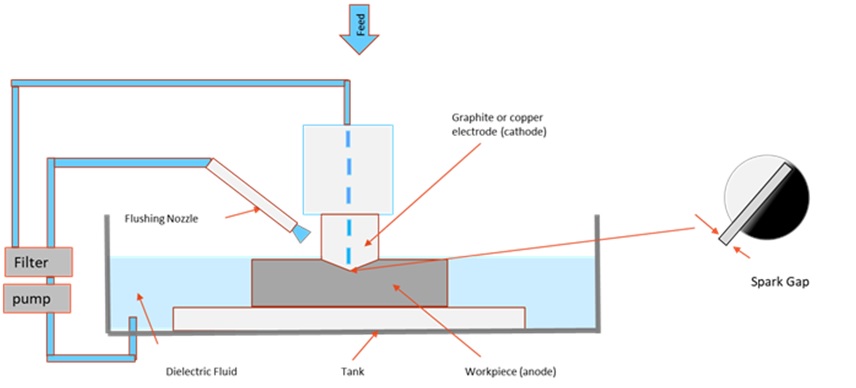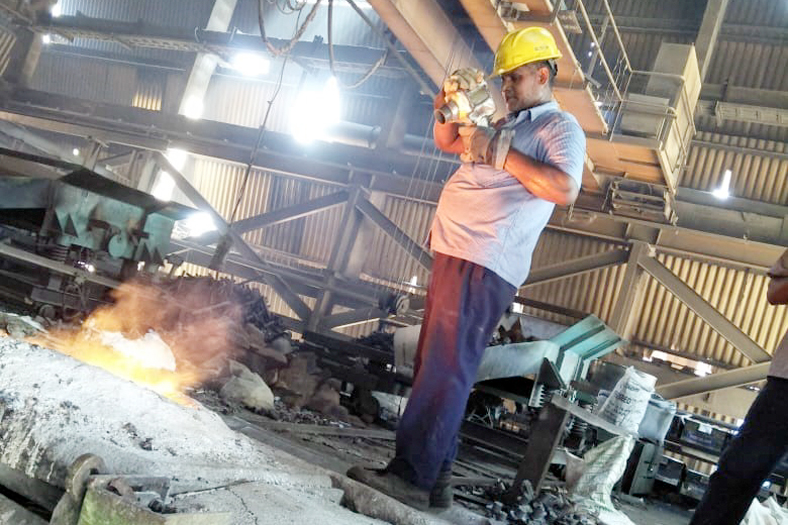Drive technology makes the difference
February 12, 2016 5:01 pm
Drive technology is the key component for the performance of a robot. Nonetheless, many established manufacturers put their trust in standard off-the-peg transmission solutions. But there is one major exception: Stäubli develops and manufactures drive systems for its six-axis kinematics in-house, thus setting a benchmark in precision, dynamics and durability.
For Gerald Vogt, Head of Robot Development at Stäubli, drive technology is one of the core competencies in this industry. He says, “Our six-axis robots are characterised by their compact enclosed design and at the same time set the benchmark in dynamics and precision. In the area of drive technology, this represents a huge challenge. Off-the-peg drive systems would quickly succumb under the temperature conditions that prevail at high load inside the enclosed casing. For that very reason, manufacturing our own gearing is not a luxury for Stäubli but rather a factor that is critical to the successful performance of the robot.” Stäubli is a mechatronics solution provider with three dedicated divisions: textile machinery, connectors and robotics.
The fact that drive technology is a key differentiator in robotics was recognised at an early stage by Stäubli. Today, the company can look back on almost 25 years of expertise in the development and construction of drive systems. The production of the drive units takes place at the main factory in Faverges, France. Stäubli employs a sophisticated mix of manual and automated processes backed up by seamless quality management. The trickiest aspect – the actual assembly of the transmission units – is done entirely by hand.
A lot of experience and knowledge goes into the highly sensitive gear assembly. The bias in the gears has to be very finely adjusted according to model and version: the gear unit must not have too little bias, since this would lead to increased backlash, nor must the bias be set too high, because this would result in excessive wear. Ultimately, the precision of the robot depends on the assembly steps being accurately performed. No wonder then that the gear assembly team consists exclusively of highly qualified specialists.
Quality assurance at the highest levelThe gear units are tested immediately after manufacture for linearity. Once installed, they are tested yet again for linearity; the purpose of this second check is to ensure that no errors have occurred during assembly that might have a negative effect on the linearity of the transmission unit. Finally, each robot undergoes one last quality inspection in which the overall system is tested for precision and path accuracy. Only 100 per cent tested machines are delivered to end users, which is why complaints are almost unheard of.
Many other manufacturers dispense with such high QA standards: in an age of reliable and controllable production processes, this is no longer necessary, or so they claim. Gerald Vogt is of a different opinion: “The whole thing is a matter of tolerances. For standard transmission units in conventional tolerance ranges that may well be valid. But in the case of our customised high-precision drives, it’s a different story. Our gear units can be very finely tuned according to model and version, and this is what makes the Stäubli six-axis robots so superior in terms of precision. As we do not tolerate fluctuations in the precision and dynamics of our series robots, we regard quality assurance at the highest level as a must.” Stäubli currently mounts the innovative JCS/JCM range of drives in axes 1 to 4, while gearing of a quite different design (also developed in-house) is fitted in the wrist axes. JCMs are compact motor-gear units, but because of their size, they can only be used in axes 1 to 4. Gerald Vogt explains the great advantage of JCM drive technology: “JCS stands for Joint Combiné Stäubli. This means that our transmission units perform the functions of gear reduction and gear bearing in a small and rigid design, hence the use of the term ‘Combiné’ (=combined).
JCS allowed the company to bring the first fully enclosed robot onto the market back in 1992, because its design meant that the wiring could be threaded through the casing in a particularly elegant manner. JCM drive technology is based on JCS technology and has the motor directly integrated in the transmission as a unit in an oil bath. This variant is characterised by a highly compact design combined with great performance. The integrated motor means there is no drive pinion, which cuts out any backlash in the mechanism and dispenses with the need for subsequent adjustment. Other key advantages of this drive technology in addition to the functional integration of reduction/bearing/motor are the excellent linearity of the transmission, the absence of backlash and the durability, which beats any other available transmission unit for robotics out of sight.
Designed for a long robot lifeOne advantage is that the availability of proprietary drive technology enables Stäubli to use the optimally sized gear for each individual articulated robot series. For this reason, failures due to under-sized drive technology simply do not occur with the RX and TX series. On the contrary, Stäubli drive systems are good for 100,000 hours use or even longer depending on the load to which they are subjected. At the same time, these gear units have been fine-tuned to deliver the shortest cycle times and maximum resistance to fatigue stress. Gerald Vogt says, “We have optimised our drive systems not for specific measurement cycles and data sheet performance but for maximum output and precision over years of continuous operation.”
A close inspection of the drive unit interior confirms Stäubli’s commitment to quality. In contrast to standard gear units which have to make do with grease lubrication, Stäubli’s own gear systems and motor gear units are completely immersed in an oil bath. The advantages of this are better cooling, longer life and also lower noise emission. However, the low operating noise of the robot is also a result of the pioneering design and technical implementation of the transmission, in which far fewer parts are engaged than with standard systems. Another factor contributing to the longer life compared with standard transmissions is the significantly higher density of ball bearings, which considerably reduces wear.
According to Gerald Vogt, “The six-axis robots are defined by their drive technology. Without the proprietary development work we have done in the transmission sector, there would be no compact fully-enclosed Stäubli six-axis robots with their outstanding performance statistics and above-average life expectancy. And it is precisely these characteristics that qualify the RX and TX series for the most demanding applications.”
A lot of expertise goes into the sensitive business of transmission assembly which is performed by hand at the Faverges main plant. Stäubli is able to use its optimally sized gear unit for each articulated-arm robot series
Stäubli started its operations in India in year 2012. With Head Office in Mumbai and engineers in Chennai, Bangalore, Pune and Delhi, Stäubli provides prompt services to the customers. Mumbai office is equipped with well qualified Sales Team, Sales Support, Application Engineering Team and Customer Service Team.
In India, Stäubli has got robots installations for machine tending, debburing, buffing and polishing, glue dispensing, high speed picking, packing, handling, laser cutting and welding, painting, picking, packing and pelletizing applications.
Contact:
Stäubli Tec Systems India Pvt Ltd Chandan Singh, Business Unit ManagerTele: +91-22-28239343/45Fax: +91-22-28235484Email: c.singh@staubli.comwww.staubli-india.in
Cookie Consent
We use cookies to personalize your experience. By continuing to visit this website you agree to our Terms & Conditions, Privacy Policy and Cookie Policy.







